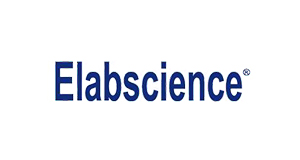Recombinant Rat TGF-beta 3/TGFB3 protein (His tag)
Recombinant Rat TGF-beta 3/TGFB3 protein (His tag)
SKU
ELSPDER100073-20
Packaging Unit
20 µg
Manufacturer
Elabscience Biotechnology
Availability:
loading...
Price is loading...
Abbreviation: TGF-beta 3;TGFB3
Target Synonym: ARVD;ARVD1;LDS5;RNHF;TGFbeta 3;transforming growth factor beta-3
Target Species: Rat
Expression Host: E.coli
Fusion Tag: N-His
UNIProt ID: Q07258
Background: TGF?-beta 3 (transforming growth factor-beta 3) is a member of a TGF?-beta superfamily subgroup that is defined by their structural and functional similarities. TGF-beta 3 and its closely related proteins, TGF-beta 1 and ? beta 2, act as cellular switches to regulate immune function, cell proliferation, and epithelial-?mesenchymal transition. The non-redundant biological effects of TGF-? beta 3 include involvement in palatogenesis, chondrogenesis, and pulmonary development. Rat TGF?-beta 3 cDNA encodes a 412 amino acid (aa) precursor that contains a 23 aa signal peptide and a 389 aa proprotein. TGF-beta 3 is secreted as a latent complex. This latent form of TGF-beta 3 is activated by integrins, thrombospondin-1, plasmin, and matrix metalloproteases. It can also be activated by extreme pH and reactive oxygen species. TGF-beta 3 binds with high affinity to TGF-beta RII, a type II serine/threonine kinase receptor. This receptor then phosphorylates and activates type I serine/threonine kinase receptors, TGF-? beta RI or ALK-?1, to modulate transcription through Smad phosphorylation. The divergent biological effects exerted by individual TGF-beta isoforms is dependent upon the recruitment of co-receptors (TGF-? beta RIII and endoglin) and the subsequent initiation of Smad--dependent or -independent signaling pathways.
Sequence: Leu 24-Ser 412
Purity: > 95 % as determined by reducing SDS-PAGE.
Formulation: Lyophilized from sterile PBS, pH 7.4.
Normally 5 % - 8 % trehalose, mannitol and 0.01% Tween80 are added as protectants before lyophilization.
Please refer to the specific buffer information in the printed manual.
Endotoxin: Please contact us for more information.
Target Synonym: ARVD;ARVD1;LDS5;RNHF;TGFbeta 3;transforming growth factor beta-3
Target Species: Rat
Expression Host: E.coli
Fusion Tag: N-His
UNIProt ID: Q07258
Background: TGF?-beta 3 (transforming growth factor-beta 3) is a member of a TGF?-beta superfamily subgroup that is defined by their structural and functional similarities. TGF-beta 3 and its closely related proteins, TGF-beta 1 and ? beta 2, act as cellular switches to regulate immune function, cell proliferation, and epithelial-?mesenchymal transition. The non-redundant biological effects of TGF-? beta 3 include involvement in palatogenesis, chondrogenesis, and pulmonary development. Rat TGF?-beta 3 cDNA encodes a 412 amino acid (aa) precursor that contains a 23 aa signal peptide and a 389 aa proprotein. TGF-beta 3 is secreted as a latent complex. This latent form of TGF-beta 3 is activated by integrins, thrombospondin-1, plasmin, and matrix metalloproteases. It can also be activated by extreme pH and reactive oxygen species. TGF-beta 3 binds with high affinity to TGF-beta RII, a type II serine/threonine kinase receptor. This receptor then phosphorylates and activates type I serine/threonine kinase receptors, TGF-? beta RI or ALK-?1, to modulate transcription through Smad phosphorylation. The divergent biological effects exerted by individual TGF-beta isoforms is dependent upon the recruitment of co-receptors (TGF-? beta RIII and endoglin) and the subsequent initiation of Smad--dependent or -independent signaling pathways.
Sequence: Leu 24-Ser 412
Purity: > 95 % as determined by reducing SDS-PAGE.
Formulation: Lyophilized from sterile PBS, pH 7.4.
Normally 5 % - 8 % trehalose, mannitol and 0.01% Tween80 are added as protectants before lyophilization.
Please refer to the specific buffer information in the printed manual.
Endotoxin: Please contact us for more information.

 Deutsch
Deutsch










